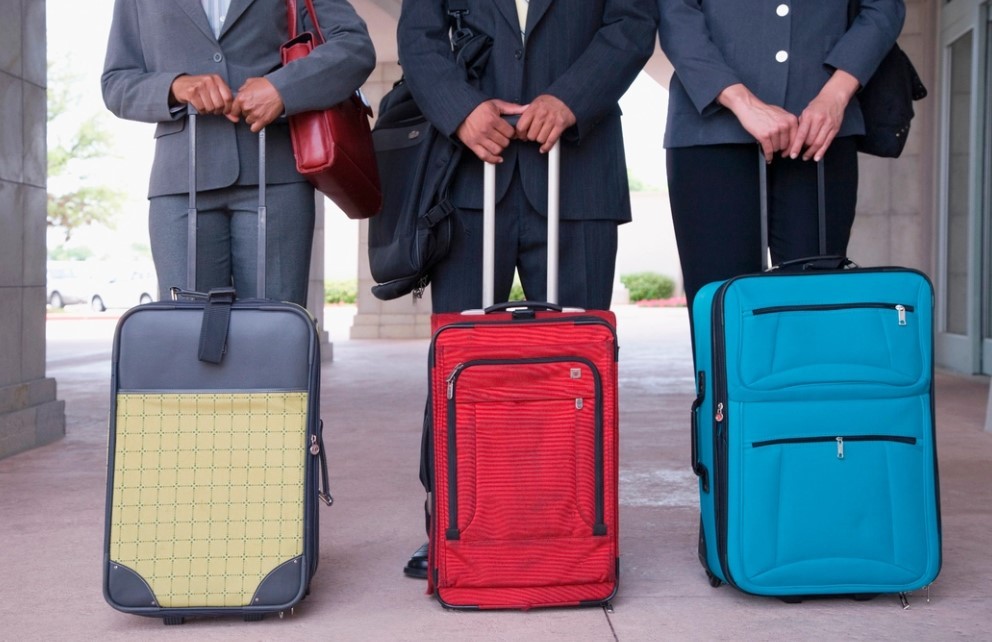Prohibited Items on Domestic Flights, And Exceptions in the U.S
| Table of Contents |
Flying within the U.S. involves strict security regulations, particularly regarding what you can and cannot bring on board. Whether you’re packing your carry-on or checked luggage, it’s crucial to be aware of what items are restricted or prohibited to ensure a smooth security screening process.
Learn more: Prohibited Items on Domestic Flights, And Exceptions in the UK
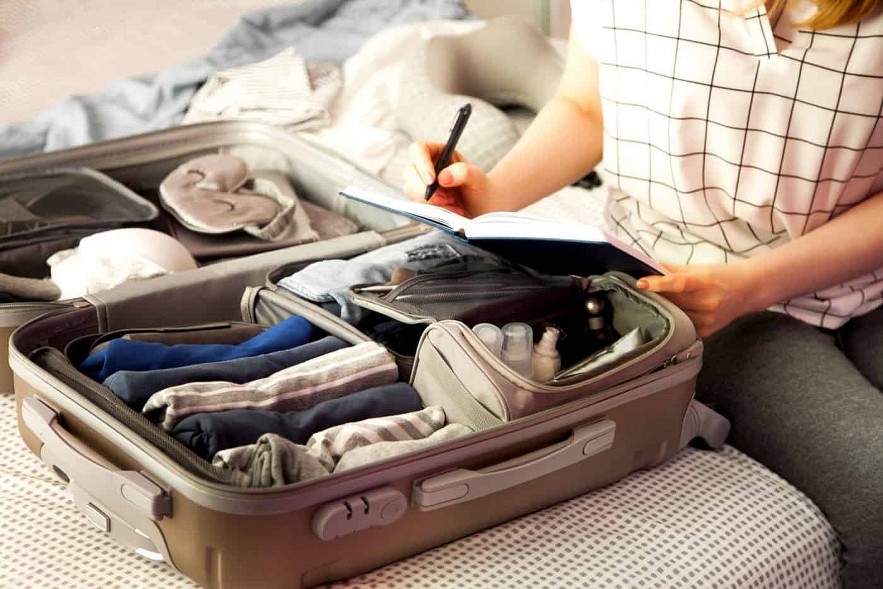 |
| Prohibited Items on USA Domestic Flights |
This article will outline the differences in prohibited items for carry-on and checked luggage on U.S. domestic flights and explain whether airline rules differ across carriers.
Carry-On Luggage: What You Can’t Bring
Carry-on luggage is subject to strict rules due to safety concerns, particularly regarding items that could be dangerous if mishandled during a flight. The following items are prohibited in carry-on bags on domestic flights:
-
Weapons and Firearms: Guns, ammunition, and other firearms are strictly forbidden in carry-on bags. This includes toy guns and replicas.
-
Sharp Objects: Knives (except for plastic or butter knives), box cutters, scissors with blades longer than 4 inches, and other sharp objects are not allowed. However, nail clippers and tweezers are generally permitted.
-
Explosives and Flammable Materials: Items like fireworks, flares, and sparklers are prohibited. Additionally, gasoline, lighter fluid, and aerosol cans (except for small personal care items) are banned from carry-on luggage.
-
Self-Defense Items: Pepper spray, stun guns, and other self-defense items are not allowed in carry-on bags.
-
Liquids Over 3.4 Ounces (100 milliliters): The TSA’s 3-1-1 rule restricts the amount of liquids, gels, and aerosols in carry-on bags. Any container larger than 3.4 ounces must be packed in checked luggage, even if it is only partially full.
-
Tools: Tools longer than 7 inches (such as hammers, drills, and wrenches) are prohibited in carry-ons.
-
Certain Sporting Goods: Baseball bats, golf clubs, ski poles, and other sporting equipment that could be used as weapons are not allowed in carry-ons.
Checked Luggage: What’s Restricted and What’s Prohibited
While checked luggage allows more flexibility, certain items are still restricted or banned entirely:
-
Firearms and Ammunition: Firearms may be transported in checked luggage, but they must be unloaded and packed in a locked, hard-sided container. You also need to declare them to the airline during check-in. Ammunition is allowed but must follow strict packing guidelines.
-
Explosives and Hazardous Materials: Items like fireworks, flammable liquids, and dynamite are strictly prohibited in checked luggage. Similarly, lithium batteries (especially spare batteries for electronic devices) must be packed according to airline guidelines to avoid fire hazards.
-
Flammable Liquids and Solids: Gasoline, lighter fluid, and other flammable liquids or solids are banned from checked luggage, just as they are in carry-ons.
-
Self-Defense Items: Items like pepper spray and tasers are generally banned in checked luggage, although some airlines allow a small amount of pepper spray (less than 4 ounces) if packed according to specific guidelines.
-
Lithium Batteries: Any spare lithium batteries must be carried in your hand luggage, not checked, due to their fire risk. Large power banks and lithium batteries over 100 watt-hours may require airline approval.
Check more detail "Prohibited and Restricted Items" by U.S. Customs and Border Protection.
Do Airline Regulations Differ in the U.S.?
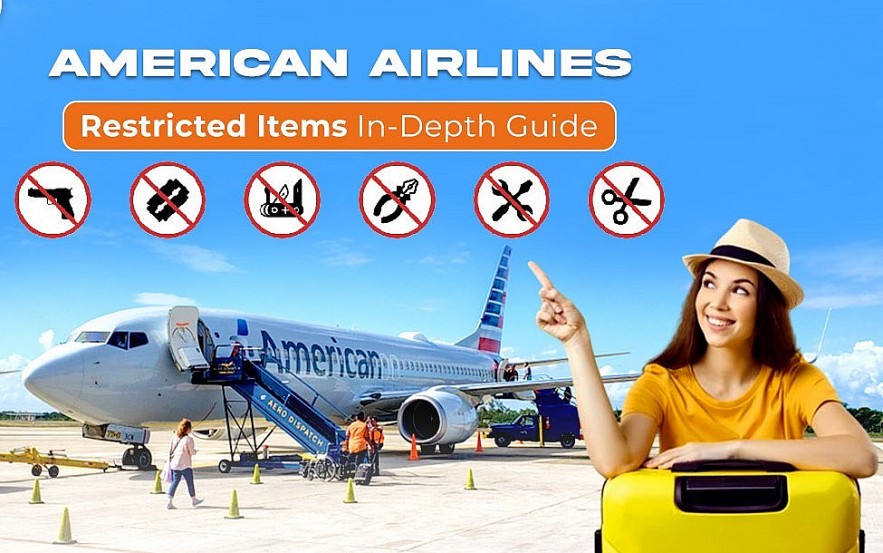 |
| Prohibited Items on Domestic Flights of American Airlines |
While all U.S. airlines follow the Transportation Security Administration (TSA) guidelines, there can be slight variations in specific policies. For example, some airlines might have additional restrictions on the size and weight of carry-on luggage or the number of bags you’re allowed to check in.
However, TSA rules around prohibited items apply uniformly across all domestic airlines, including major carriers like Delta, United, American Airlines, Southwest, and JetBlue. Always check with your airline before flying, particularly if you have items that might raise security concerns.
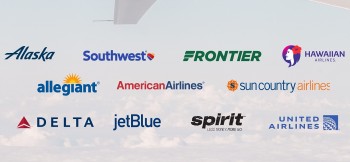 Top 10 Largest Airlines in the U.S: A Comprehensive Overview Top 10 Largest Airlines in the U.S: A Comprehensive Overview |
Exceptions to Banned Items in the U.S.
While many items are banned for safety reasons, some exceptions exist, particularly for medical or security reasons. Here are some key examples:
-
Medical Devices and Medications:
- Insulin and Syringes: Passengers who need to carry insulin or other injectable medications are allowed to bring them, provided they have the proper documentation, such as a doctor’s note or prescription label.
- Portable Oxygen Concentrators (POC): These are allowed on board if they meet the airline's safety standards and can be used during the flight. However, passengers must notify the airline in advance.
- EpiPens and Other Emergency Medications: Passengers are permitted to carry EpiPens and similar emergency medical devices, provided these are in proper packaging and with appropriate medical documentation.
-
Disabilities and Assistance Devices:
- Wheelchairs and Mobility Devices: Personal wheelchairs, crutches, and other mobility aids are allowed, although they must undergo security screening. Airlines are required to accommodate passengers with disabilities under the Air Carrier Access Act (ACAA).
- CPAP Machines: Passengers with sleep apnea can bring a CPAP machine on board. However, it’s important to check with the airline for specific guidelines on the use of electronic medical devices during flights.
-
Baby Formula and Breast Milk:
- Baby formula, breast milk, and juice are allowed in reasonable quantities that exceed the standard liquid limit of 3.4 ounces (100 ml). Parents or guardians should declare these items at the security checkpoint for special screening.
Common Misconceptions About Allowed Items
Many passengers assume certain items can be brought on board U.S. flights, leading to confusion at airport security checkpoints. Some common misconceptions include:
-
Liquids in Large Containers:
Some passengers believe that water bottles or full-sized toiletries are allowed if purchased in duty-free shops or airport stores. However, the TSA enforces strict liquid rules for carry-ons, limiting liquids, gels, and aerosols to containers of 3.4 ounces or less, unless these are duty-free items purchased after the security checkpoint.
-
Self-Defense Items:
Items like pepper spray, stun guns, and knives are often mistakenly thought to be allowed in checked luggage only. However, some airlines prohibit such items entirely. In carry-on bags, these items are banned outright.
-
Hoverboards and Lithium Batteries:
Many passengers assume that hoverboards and other devices with lithium batteries can be carried on board. However, due to the fire risks posed by lithium-ion batteries, many airlines prohibit hoverboards in both carry-on and checked luggage.
How U.S. Regulations Differ from International Standards
 |
| Many items are banned from hand luggage on flights |
While most countries follow similar rules regarding banned items, there are some differences in how these regulations are applied globally.
-
Liquid Restrictions:
The U.S., like most countries, restricts liquids in carry-on luggage to containers no larger than 3.4 ounces (100 ml). However, in some countries, the enforcement of this rule may vary slightly, particularly concerning duty-free purchases.
-
Sharp Objects:
The U.S. Transportation Security Administration (TSA) bans all sharp objects, including knives and scissors longer than 4 inches, from carry-on luggage. However, some European and Asian countries allow small scissors or blades under certain lengths.
-
Food Items:
The U.S. is relatively strict about what food items can be brought on board or through customs. Other countries may have more lenient policies on bringing food across borders, though restrictions generally apply to liquids and perishables.
-
Prohibited Electronics:
The U.S. has more stringent policies on electronics like laptops, cameras, and drones in carry-on luggage compared to some countries. International travelers may find the rules on electronics more relaxed in certain regions of Asia or Africa.
In Conclusion
Knowing what you can and cannot bring aboard a domestic flight is essential to avoid delays, fines, or confiscation of your belongings. Items like weapons, sharp objects, and explosives are universally banned in both carry-on and checked luggage, while certain items like firearms can be transported under strict conditions. While TSA rules apply across all airlines, minor variations between carriers might exist, so it’s always wise to check your airline’s policies before packing.
While U.S. aviation regulations are similar to those in many other countries, there are unique aspects, especially regarding exceptions for medical devices and mobility aids. Travelers should familiarize themselves with these exceptions and understand the rules around common items that are often mistakenly thought to be allowed. When flying internationally, it’s essential to be aware of varying restrictions and plan accordingly.
FAQs
1. Can I bring a pocket knife in my carry-on?
No, pocket knives are prohibited in carry-on luggage. However, they can be packed in checked luggage.
2. Are liquids allowed in my carry-on?
Liquids are permitted in carry-ons, but each container must be 3.4 ounces (100 ml) or smaller, and all containers must fit into a single quart-sized bag.
3. Can I bring a lighter or matches on a plane?
You are allowed to carry one lighter or a book of safety matches in your carry-on but not in your checked luggage.
4. Can I bring lithium batteries in checked luggage?
No, spare lithium batteries must be packed in your carry-on. Lithium batteries over 100 watt-hours may need airline approval.
5. Are there different regulations for sports equipment?
Yes, items like baseball bats and ski poles are banned from carry-ons but may be transported in checked luggage.
6. What happens if I accidentally bring a prohibited item?
If a prohibited item is discovered during security screening, TSA officers may confiscate it, and you could face delays or fines depending on the item.
7. Are U.S. aviation regulations stricter than in other countries?
In general, U.S. aviation rules are similar to global standards, but there are unique exceptions and stricter rules on certain items, such as liquids, electronics, and self-defense tools. Always check the specific regulations of both your departure and destination countries.
8. Can I bring a portable oxygen concentrator (POC) on board?
Yes, POCs are allowed if they meet the airline’s safety standards. Notify the airline in advance to ensure smooth boarding.
 Top 10 AirLines With The Most Beautiful Flight Attendants in The World Top 10 AirLines With The Most Beautiful Flight Attendants in The World Who is the most beautiful flight attendant in the world? The airline industry demands a high level of physical fitness and attractiveness from their flight ... |
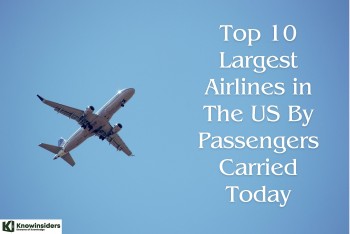 Top 10 Largest Airlines in the US by Passengers Top 10 Largest Airlines in the US by Passengers The US airline industry has grown and competed in 2024 as air travel recovers from the pandemic. The top 10 largest airlines in the country ... |
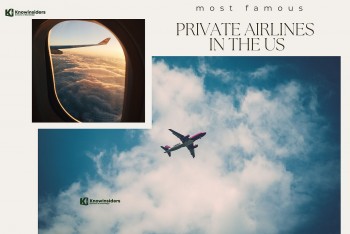 Top 9 Most Popular Private Airlines In the US Top 9 Most Popular Private Airlines In the US The US private jet industry has grown a lot in the last few years. This is because there are so many ways to fly. It's ... |
 How to Check-in Online with American Airlines: A Step-by-Step Guide (Updated) How to Check-in Online with American Airlines: A Step-by-Step Guide (Updated) American Airlines makes it easy to check in online, so you can skip the line at the airport. If you've never checked in online before, ... |


